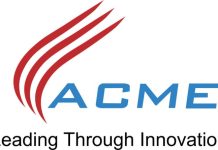Abstract
This article discusses the importance of pipeline transportation of oil and gas in a modern economy and spells out the hazards associated with cross country pipelines. The causes of hydrocarbon release from a pipeline are identified in the paper. The essential safety features to be adopted in a cross country pipeline system have been discussed at length. The need for developing a suitable emergency plan to deal with hydrocarbon releases is also emphasised.
Introduction
Pipelines have been extensively used for the transportation of oil and gas around the globe for a very long time. Pipeline transportation is commonly employed in the case of petroleum crude, petroleum products, natural gas, LPG and propane.
The wide network of natural gas and petroleum pipelines covering thousands of kilometres plays a crucial role in the economy of many countries like United States of America, Russia, Great Britain and Canada. Most of these countries have a vast experience in the installation, operation and maintenance of the cross country oil and gas pipelines.
At present, a gas pipeline network of more than 15,000 km length exists in our country. Government has focused to develop an ecosystem of national gas grid across the country. In order to complete the grid, another 15,000 km of additional gas pipeline has been planned.
The major oil and gas pipelines existing in India are listed below:
1. Naharkatia-Nunmati-Barauni Crude Oil Pipe-line
2. Mumbai High-Mumbai-Ankleshwar-Kayoli Crude Oil and Natural Gas Pipeline
3. Salaya-Koyali-Mathura Crude Oil Pipeline
4. Hajira-Bijapur-Jagdishpur (HBJ) Gas Pipeline
5. Jamnagar-Loni LPG Pipeline
Causes of Hydrocarbon Release from Pipelines
A hazardous substance, either flammable or toxic, is safe till it is fully contained and maintained at desired parameters during storage, operation and transportation. The chemical hazard is materialised only when it loses its confinement and is released to the atmosphere. On release, the chemical disperses in the air and forms a toxic/flammable gas cloud in the downwind direction. Flammable chemical forms a cloud which could be within the flammable range. Any source of ignition within the cloud could lead to fire or explosion.
Incidental or accidental releases of hydrocarbons are bound to occur, even though modern pipelines are safer in construction and have highly integrated leak detection systems.
The predominant causes of hydrocarbon release from the pipelines are as follows:
1. Failure due to external factors
The oil and gas pipelines are often laid belowground at a depth of 1.2 to 1.5 m, but can also be installed aboveground, if necessary. Failure due to external factors is generally caused by third party mechanical interference, which leads to a puncture or a gouge severely reducing the wall thickness of the pipeline. A catastrophic guillotine rupture of the pipeline can also occur as a result of third party interference. The failure may occur immediately or may occur sometime later due to fatigue.
A high probability of ignition is likely when flammable substances are released from a pipeline as a result of the immediate failure. A source of ignition may be provided by the adjacent hutments or vehicles moving nearby. Third party interferences can be either intentional or unintentional. Unintentional interferences occur when the third party is unaware of the presence of the pipeline.
2. Failure due to corrosion
The most commonly employed material of construction for hydrocarbon pipelines is carbon steel. Two types of corrosion are responsible for the failure of pipelines – internal corrosion and external corrosion.
Moisture in the ground and salinity of the soil are major factors causing external corrosion. External corrosion may manifest itself in the form of pinhole failures caused by pitting and more generalised corrosion leading to a reduction in pipe wall thickness over a plane area. External pitting corrosion leads to small leaks that are often difficult to detect. The pinholes caused by pitting gradually grow in size over a period of time. A reduction in wall thickness occurs due to external area or plane defects. This can cause catastrophic failure of the pipeline under pressure, leading to a large scale release.
Internal corrosion is caused by the corrosive nature of the hydrocarbon being transported. This also leads to failures similar to the ones caused by external corrosion. Failures are generally caused by the formation of acids resulting from the presence of water or sulphur compounds in the substance being transported. The corrosion effect caused by the presence of water could be more prominent in the bottom half of the pipeline.
3. Failure by miscellaneous causes
Pipelines can also fail due to a variety of other causes like construction defects, pipe material defects, human error, flood ground erosion, and earthquake. The most common construction defect is the mechanical damage caused by earth moving machinery during backfilling and is often discovered shortly after pressurisation. However, some of the defects such as inadequate welding, inadequate corrosion protection to joints and damage to corrosion resistant coating that occur during the laying of the pipeline will only be identified sometime later.
Safety Features of Hydrocarbon Pipelines
Modern pipeline construction has advanced considerably. The modern steel pipelines carrying hydrocarbons are installed and maintained by following the appropriate national and international codes and practices. The fabrication and erection of the lines shall be as per ASME B 31.4 or equivalent standards. The guidelines given in OISD – 141 (Oil Industry Safety Directorate – Design and Construction requirements for cross country hydrocarbon pipelines) shall also be followed in India. It is necessary to conduct appropriate tests to ascertain the quality of the materials being used including the welding rods. Weld joints would be subjected to radiography tests.
Following safety features are generally incorporated in a pipeline project:
1. The entire stretch of the pipeline is usually buried underground except at the booster pumping station. If an underground pipeline has to cross any existing underground water or gas line, cable, drain or other services, it shall be laid at least thirty centimetres below such services in a manner that will not obstruct the access to such services for inspection, repair or maintenance. The number of bends in the pipeline shall be kept to the minimum by proper grading of trenches or supports at crossing and other obstacles. The route of underground sections of a pipeline shall be indicated by markers, and not less than two of such markers shall be visible from any point along the route. Markers are usually installed at every 30 meters to indicate the position of the line.
2. The buried lines are protected with anticorrosive coaltar or epoxy coating. The process of providing the coating involves cleaning of the pipe by shot blasting, priming with synthetic primer, coating by successive layers of coaltar enamel, glass fibre reinforcement and glass fibre felt outer wrap. The coating is usually tested by high voltage holiday detector in accordance with NACE standard RP-02-74. The field joints shall be protected with heat shrink sleeves.
3. The entire underground portion of the pipeline would be provided with cathodic protection. Cathodic protection is a process that involves electrically connecting other metals to a pipe, which corrode more easily and protect the integrity of the pipe. Companies monitor cathodic protection constantly, conducting surveys on the pipe to ensure that adequate cathodic protection levels are maintained to minimise corrosion growth. They also periodically measure corrosion features using sophisticated in-pipe computerised instruments called inline inspection tools. If corrosion levels exceed the safe limits, repairs are undertaken to restore the strength of the pipe (by either replacing sections of pipe or installing protective sleeves).
4. The lines are buried with a minimum cover of 1.2 m. At road crossings, the lines will be installed with a minimum cover of 1.5 m through hume pipe protection using horizontal boring/trenching technique.
5. Railway crossings are provided with casing pipe protection. A minimum cover of 1.5 m is often given in such cases. The casing pipe shall also be protected with anticorrosive coating. Pipeline insulators are used to support the carrier pipe inside the casing pipe and electrically isolate the carrier pipe from the casing pipe. The annular space between the casing pipe and the carrier pipe, and carrier pipe at casing ends is sealed with casing-end-seals, in order to prevent ingress of moisture and water.
6. At river crossings, the pipeline is installed below the scour bed with a minimum cover of about 4 m. At the upstream and downstream of major water crossings, isolation valves with valve chamber shall be provided. Anti-buoyancy concrete weight coating should be provided on the pipelines in the water logged areas and river crossings to prevent lifting up of pipes due to buoyancy.
7. Pressure regulators, slam-shut safety valves and pressure relief valves are provided in gas pipelines to protect them against the occurrence of over-pressure.
8. All but weld joints in the pipeline shall be 100 per cent radiographically examined and fillet weld will be subjected to dye penetration test and ultrasonic inspection.
9. The entire pipeline will be tested hydrostatically at 1.25 times the design pressure. The test duration will be minimum 24 hours after stabilisation. The sections for crossing road, rail and river shall be pre-tested before erection.
10. Isolation valves are provided at critical locations along the pipelines to ensure quick isolation of the pipeline segments during any emergency. It should be possible to operate these valves from remote locations.
11. A computerised supervisory control and data acquisition (SCADA) system is incorporated in the pipeline network to ensure smooth and safe operation. Any leakage in the pipeline will be immediately detected by the computer system and pumping of the fluid will be immediately stopped. Communication between the various stations along the pipeline is also achieved through SCADA.
12. Natural Gas is quite often odourised with mercaptan in distribution lines for early detection of gas leaks. Mercaptan adds an unpleasant odour to odourless natural gas to aid in the detection of a leaking natural gas. It is particularly effective in detecting small leaks in distribution lines in residential areas.
13. Daily patrolling is carried out along the pipeline route to complement periodical comprehensive maintenance.
14. No maintenance or repair involving cutting or re-welding of any pipeline shall be carried out except under following conditions, namely: –
(i) an experienced engineer shall inspect the section requiring maintenance or repair, before the work is undertaken and issue a written permit specifying therein the precautions to be observed and the procedure to be followed for carrying out the work. The permit so issued shall be preserved by the owner of the pipeline for a period of six months.
(ii) all work involving cutting or welding shall be carried out by an experienced person in accordance with the permit referred to in clause (i).
(iii) the section of the pipeline shall be isolated and drained before starting the repairs or maintenance.
(iv) only mechanical cutters shall be used for cutting the pipeline or any connection thereof, unless the section of the pipeline and its connections have been purged with an inert gas.
(v) no hot work shall be carried out on any pipeline until the section thereof requiring repair has been isolated, drained and purged with inert gas or steam or kept filled with water or until such section has been prepared in a manner approved in writing by the experienced engineer.
(vi) the section of the pipeline in which repair or maintenance work has been carried out shall not be used for transporting petroleum until such sections are replaced with hydrostatically pretested sections and the repaired weld joints pass the radiography test.
(vii) no section of any pipeline and no valve fitted to it shall be separated until an efficient electrical bond has been established between the parts to be so separated which shall not be broken until the separated parts have been rejoined.
Even with the advanced leak detection technology, the human role in pipeline monitoring is vital. A review of more than 1400 accident reports from Canada revealed that on-site employees and local residents were usually the first to detect and report a leak, whereas only 19.5 per cent of the reported spills were first detected in a control room. Since every small leak or slow leak may not be detected by remote monitoring, responsible neighbours need to be aware of the signs of a pipeline release. These signs include petroleum on the ground, fire and explosion, mist or cloud of vapour, dying vegetation in a green vegetative area, sheen or a film in water, and water bubbling or liquid in unusual areas. The other signs of a pipeline release include the sound of hissing, whistling, or roaring noise.
It is essential to carry out a risk assessment of the hydrocarbon pipeline as in the case of other major hazardous materials. The hazards associated with the pipeline are identified first using techniques like HAZOP. Maximum credible loss scenarios (MCLS) associated with different operational areas should be established. The consequences of the MCLS and worst-case scenarios are estimated using empirical and semi-empirical models. The estimated damage distances will aid in development of the emergency plan.
Emergency planning is an integral part of the overall loss control programme. This is important for effective management of an accident/incident to minimise losses to people and property, both in and around the facility. The important aspect in emergency management is to prevent the unintentional escape of hazardous materials out of the facility and minimise accidents and losses by taking technical and organisational measures.
Conclusion
The transportation of oil and gas is essential for the maintenance of modern lifestyles. Pipelines play an important role in this task. In order to ensure the safe transportation, it is necessary to take precautions right from the design stage. There should not be any compromise on the safety features of cross country pipelines. The hazards in the pipeline system need to be identified so that necessary steps can be taken to address them. It is important that we recognise the signs of pipeline spills and leaks, and know what to do in case of an emergency to protect the public and the environment.
References
1. Singh, R.: Pipeline Integrity Handbook: Risk Management and Evaluation, Gulf Professional Publishing, 2013.
2. Jo, Y.-D., Ahn, B. J.: Analysis of hazard areas associated with high-pressure natural-gas pipelines, Journal of Loss Prevention in the Process Industries, 15(2002), 3, 179-188
3. Luo, Z.-S., Gao, Y., Wang, H.-C., Liu, Q.-C.: Comprehensive quantitative risk assessment of urban natural gas pipeline, Fire Science and Technology, 6(2013), 38-43.
































